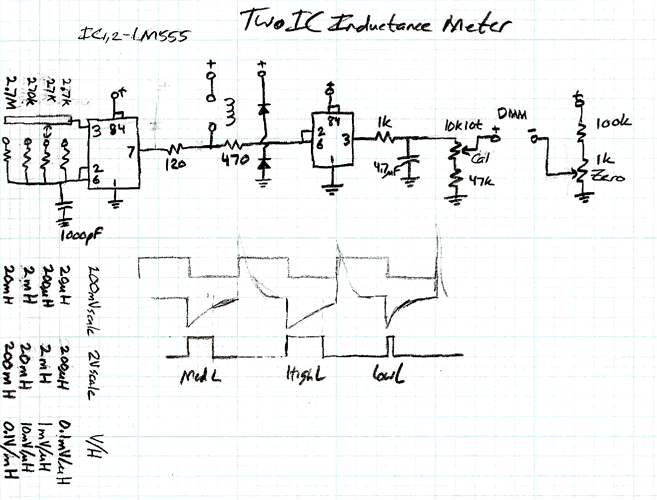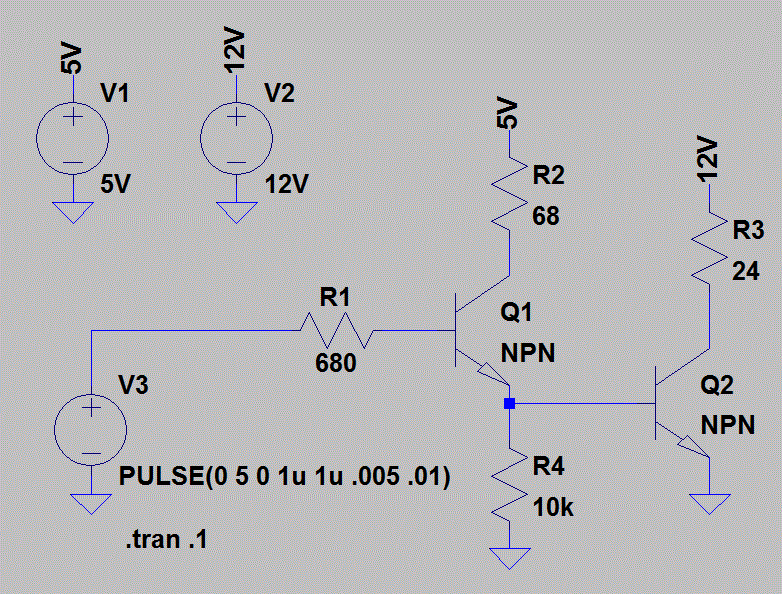I would like it to run a servo in order to push a switch. The system needs to be powered independently, not from the computers USB.
Photo-Tom:
I would like it to run a servo in order to push a switch. The system needs to be powered independently, not from the computers USB.
You can use some AA NiMh batteries or a wall wart with a few amps output to drive the Arduino and the servo. The only inconvenience is that the Arduino does not work well with a voltage as low as 6v and servos don't like a higher voltage. I would use 6 batteries (7.2v) and a 7805 regulator to step down the voltage for the servo. Don't drive the servo from the Arduino 5v pin.
If you wished you could power the receiver from the same supply with another step-down regulator.
I assume you have a general idea of how to control the servo with the receiver acting like a switch. It would probably be a good idea to make the servo run through a timed cycle rather than relying on pushing and releasing the switch at the correct time.
Also arrange things mechanically so the servo cannot push too hard on the switch even if things go wrong.
...R
...R
Thanks,
I will pick up a 6 x AA battery holder with 5.5mm/2.1mm plug to connect to the Arduino Uno board.
Using a 7805 regulator will step the voltage down from 7.2 to 5v for use with the servo. Does that come between the OUTPUT pin (10) of the Arduino and the servo?
I would like to set it up so it’s all powered by the same supply? Where would the wires go from and to with regards from the aruino and the receiver? On the receiver should I solder the wires to where the battery connects? And where would they connect to on the Arduino?
It would be useful to have a Master switch that enabled me to turn this supply on and off, where should I think about placing it?
As the receiver is 3V I would need to step down from the Aruino 5V to the receivers 3V. I assume another regulator would do here.
I have been researching and found that a Pololu Adjustable step-up/step-down voltage regulator S7V8A works very efficiently. (Pololu Adjustable Step-Up/Step-Down Voltage Regulator S7V8A) What are your thoughts to using this product?
Photo-Tom:
Using a 7805 regulator will step the voltage down from 7.2 to 5v for use with the servo. Does that come between the OUTPUT pin (10) of the Arduino and the servo?
The regulator is for the servo power, not the signal that comes from pin 10 - that is already at 5v.
If you want to power the receiver from the same power supply you can use a different regulator that can give a 3v output. You could use an LM317.
I know nothing about the Pololu regulator.
I have been assuming that the 6 AA batteries are only temporary while you prove that the project works and that the permanent project will be mains powered.
Your post gives me the impression you are starting to get ahead of yourself again. Just do one step at a time.
...R
Ok, so shall I power the servo from the 5V pin with a 7805 to step down the voltage, or do you suggest a more effective setup?
I will pick up a LM317, so I have one power supply to run the entire circuit.
The project needs to be very flexible in respect to where it is used. This means I unfortunately can’t use mains. When I’m taking photos it would be good to have it working for more than an hour duration with each set of batteries. I guess only through testing I will discover the battery life of the project.
In other projects I have setup, when using servos I have always put a capacitor in the circuit to smooth out the voltage changes that might occur, should I do this here as well?
Photo-Tom:
Ok, so shall I power the servo from the 5V pin
NOT FROM THE 5V PIN
NEVER FROM THE 5V PIN
Sorry for the rant. Feed the servo power directly from the battery, not through the Arduino.
In any case why would you need to use a 5v regulator to regulate a 5v power supply?
Maybe this crude diagram will help
battery ---------------------------------Arduino barrel connector
|
------ 7805 -----------------servo
|
------- LM 317 --------- 3v device
...R
What is the best way to connect the additional wires (servo and 3v device) to the power supply? I think to use something like this: 6 x AA battery holder with 5.5mm/2.1mm plug : ID 248 : $2.50 : Adafruit Industries, Unique & fun DIY electronics and kits
Out of curiosity, why shouldn't a servo be run off of the 5V pin? (just for future reference)
Will I need to use a capacitor to smooth out the voltage changes that might occur when using the servo, or will it be ok?
Photo-Tom:
Out of curiosity, why shouldn't a servo be run off of the 5V pin? (just for future reference)
Servos can draw more current than the 5v pin can provide. That causes the Arduino 5v to drop too low and the Arduino won't work, or it will reset. It can also overload and damage the on-board voltage regulator.
That battery box is OK but it looks like it is designed to plug into the Arduino barrel connector. You will need access to the wires before they go into the Arduino so that you can connect the voltage regulators. Initially the best thing might be to connect the battery to a breadboard that can hold the various regulators and associated components. then you can connect from the breadboard to the Arduino barrel connector using a suitable plug on a length of wire. When everything is working you could make a more permanent circuit on a piece of veroboard.
...R
Your schematic is not only confusing, it is wrong. The output of the regulator is shorted to ground, and it appears that the ground pin of the servo is connected to nothing but the bypass capacitor.
Use the ground symbol so you don't have a mishmash of wires running everywhere. You can do the same with a small circle labeled "5V" to indicate the 5V supply line. Signal flow should go from left to right as much as possible. Power should go + supply on top, ground on the bottom, or - on the bottom if there is a negative supply. These are often called "global connections".
I really hate what Fritzing and Make magazine are doing to schematics.
http://opencircuitdesign.com/xcircuit/goodschem/goodschem.html
Remember that the point behind using schematics rather than a pictorial is to make it more clear what the circuit is doing and how it is wired up.

polymorph:
Your schematic is not only confusing, it is wrong. ....
What is your post about?
It looks like a schematic for connecting a pulse to an Arduino pin
I have a feeling we have already moved past that stage.
...R
Hi Robin,
I have ordered a few of the parts, regulators and battery pack. Just waiting on there arrival before i can continue with the setup.
Your schematic is not only confusing, it is wrong. ....
Robin2:
What is your post about?
It looks like a schematic for connecting a pulse to an Arduino pin
I have a feeling we have already moved past that stage....R
I was talking about the schematic here:
http://forum.arduino.cc/index.php?topic=291170.msg2043977#msg2043977
polymorph:
I was talking about the schematic here:
Wireless Remote control project - understanding the building of the circuit - #17 by Photo-Tom - Project Guidance - Arduino Forum
Ah....
I had assumed that was history.
...R
No one had mentioned the problems with that schematic, or how difficult it was to follow, so I felt it should be mentioned.
Sorry for the delay in reply, I have been waiting on the delivery of parts.
I have wired up the circuit with the 6AA NiMh battery pack connected to the bread board Live and GND. I then have a wire going from the bread board GND into the GND of the Arduino and a wire going from the bread board LIVE into the 5V of the Arduino (is this correct as an input into the Arduino?).
I have the yellow wire of the receiver (GND) going into the GRD on the Bread board.
I have the Red (Shoot) wire of the receiver going into pin 11 on the Arduino.
I have a wire going from the LIVE of the breadboard into the left pin of the LM317 and on the other side of it, a wire connecting to the Receivers Live. I have connected a wire from the Breadboard GND to the right pin of the regulator and then from the other side, a wire connecting to the receivers GND.
When placing a Regular in the circuit, do I need to place it in between the Live input to the BreadBoard and the Live out put from the BreadBoard to the receiver (as I have done with both receiver power regulator and servo) or can the Live wires both be fixed to the same side of the regulator?
I am concerned about how the Regulator is connected for the Receiver, there are three pins on the Regulator, and I am currently using two, do I need to use the third pin? and am I using the correct two pins of the Regulator?
I also have connected the 7805 Regulator for the Servo in between the inputs and outputs on the Breadboard. With the Brown wire connecting to the GND and the Red wire connecting to Live and the yellow wire connecting to Pin 10.
I have not connected the circuit to power yet, as I wanted it to be overlooked first. If it’s easier I could also draw a schematic of the circuit, or take some more images?
Sorry but you need to produce a circuit schematic, not a photo of the hardware and a description as they are too easy to misunderstand. A photo of a pencil drawing of the schematic will be fine.
...R
See the links in my signature.
I have drawn up the circuit. This is how it is currently setup. I have not connected the power.
Should I be powering the Arduino through the 5V pin?
I guess I will need capacitors, but I’m unsure of their placement and size required. Although, i might be skipping ahead again.
I presume it is by mistake that you are connecting your 7.2v battery to the Arduino 5v pin.
You need some additional parts to make an LM317 produce the voltage you want - look at its datasheet. It is not a fixed voltage device like a 7805. It is not essential but it makes it very much easier to adjust if you use a multi-turn potentiometer.
...R
Should the battery pack go to the Power Vin pin of the Arduino.
i should put a multi-turn potentiometer in the circuit along with two capacitors and resistors.
From research I worked out a resistor should be connected between the Regulators Adjustment and Output. And another between the Regulators Adjustment and the Potentiometer.
What I’m struggling with are the calculations. I didn’t understand the datasheet. And am unsure of the equations to use to work out what size Resistors and Capacitors to use.
I understand that capacitors stabilise the voltage with one going on the Input and one on the Output of the Regulator.
I read that I should use capacitors that are higher than the Voltage I’m using, again how do I work this out?
A lot of people used a 10k Pot, should I get a 10k one?




